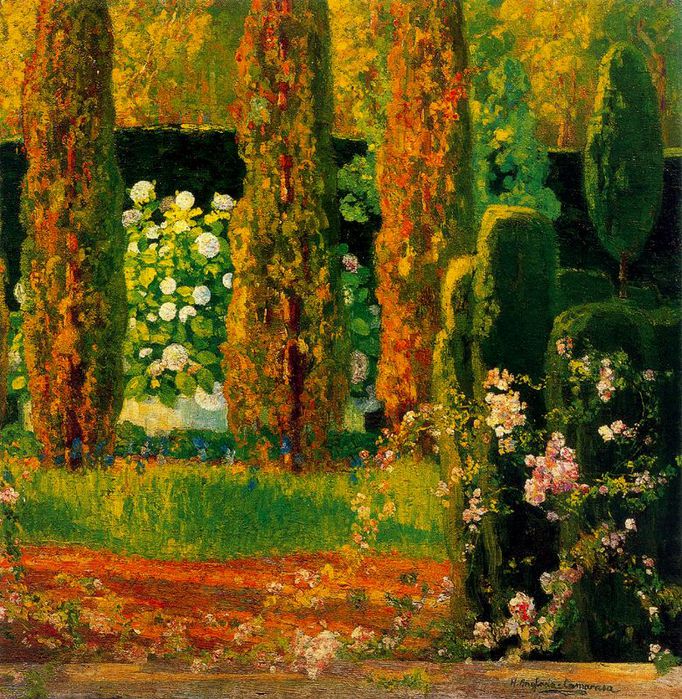Hermen Anglada Camarasa
(b Barcelona, 11 Sept 1871; d Port de Pollença, Mallorca, 7 July 1959). Spanish Catalan painter. He studied under Tomàs Moragas (1837–1906), but mainly under Modest Urgell (1839–1919) at the Escola de Belles Artes (Llotja) of Barcelona. In 1888 Anglada-Camarasa participated in the Exposició Universal in Barcelona. At his first one-man show, at the Sala Parés, Barcelona (1894), he exhibited Realist landscapes. In 1894 he settled in Paris and studied at the Académie Julian and Académie Colarossi. Between 1898 and 1904 he took part in numerous international exhibitions and won fame with his almost expressionistic scenes of Spanish dance (e.g. Spanish Dance (Córdoba) , 1901; St Petersburg, Hermitage) and iridescent nocturnal Parisian scenes (e.g. Glow-worm , 1904; Stockholm, Thielska Gal.), which influenced the young Picasso and Kandinsky. In 1904, after a trip to Valencia, he began painting folkloric subject-matter not out of interest in anecdote or naturalism but as a source of brilliant and colourful forms. He had a strong sense for the decorative and greatly admired fireworks. Until 1914 he lived in Paris, where his pupils included María Blanchard, Amadeu de Sousa Cardoso, Charles Ginner, Roberto Montenegro and Tito Cittadini (1886–1960), and he exhibited in cities in Europe and America. Maksim Gor’ky admired his work, and the theatre director Vsevolod Meyerhold (1874–1940) mounted a play in St Petersburg based on paintings by Anglada-Camarasa (1912). In 1914 he settled in Port de Pollença and predominantly painted landscapes, always in a more decorative rather than realistic style. In this period Anglada-Camarasa was very successful in the USA, exhibiting in many cities, including Pittsburg, Philadelphia, Chicago, Los Angeles and Washington, DC. He also showed work in Barcelona, Madrid, Buenos Aires, Palma de Mallorca, London and Liverpool. He lived in Barcelona and the Monastery of Santa Maria, Montserrat, during the Spanish Civil War (1936–9) and afterwards went into exile in Pougues-les-Eaux, near Nevers, until 1948. He was a member of various academies and societies. The Fundació La Caixa in Palma de Mallorca houses his largest painting, Valencia (5.80*6.12 m, 1910).






































.jpg)


.jpg)
ليست هناك تعليقات:
إرسال تعليق